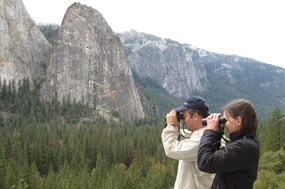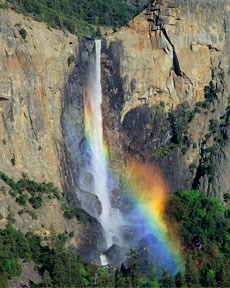
If you count the length of the spectacular waterfalls to the height of the majestic mountains, Yosemite’s natural resources add up to be quite impressive to the 3.7 million annual visitors taking in the view.
Wildlife
Flora Flowering plants: Approximately 1,500 species 
Christine White Loberg Yosemite Falls: 2,425 feet (with its three sections, it makes up the tallest waterfall in North America)
Bridalveil Fall: 620 feet
Elevations of Popular Sites (above sea level) El Capitan: 7,569 feet and 3,593 feet from the base
Elevations of Tallest Peaks (above sea level)
Mt. Lyell: 13,114 feet (tallest point in the park) Climate (Yosemite Valley)
|
Last updated: March 29, 2020
